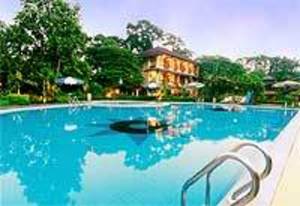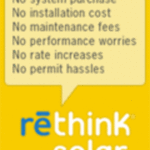Are you one of those people who liked to swim all year around? And is your cold pool keeping you from doing just that? Maybe you’ve thought of a Jacuzzi instead, but what you might not have considered is the benefit of a pool heater. And I’m not suggesting you go out and buy an expensive underwater heater for you pool, but instead make your own inexpensive, highly-efficient, homemade solar pool heater.
It’s simple to construct and works as long as there is sunlight. It can work on cloudy days as well, but just not quite as well.
What You’ll Need
Now I said this device is cheap, but it’s not free. You can’t MacGyver your own heater from grass and duct tape. No, you’ll have to invest a little money to get the parts you’ll need to construct it.
First off, find an underwater pump. You can find these at pool supply stores, hardware stores, and home improvement retailers like Lowe’s and Home Depot. It will cost you somewhere around $50 USD. That’s not too much to pay for swimming in comfort all year long.
Secondly, you’ll have to purchase a solar panel. The panel will run about three times as much as the pump, and it can be found at many of the same places. If you’re having trouble finding one in stores, you may consider purchasing one online at Amazon.com, Lowes.com, or Walmart.com. All of these stores tend to have larger selections in their online shops, as they can store products there that don’t typically sell well or don’t sell all year long.
You’ll also need conductive wiring such as copper wire. This will connect all the parts of your solar pool heater and channel power from one to the other. Additionally, your solar heater will require some piping (DIYLife.com suggest PVC) and a PV module. The PV module is a photo-voltaic cell that helps turn sunlight into thermal energy to heat your pool and Dummies.com suggests using a 12.5 volt cell.
Putting it Together
The pump should ideally go under the water- that is, after all, why you bought a submersible pump in the first place. The pump gets wired (with your copper wiring) to the PV module. That powers the pump without using costly electricity and saves you some money, which frankly, is what this is all about. The PV module goes into the water as well, to help generate heat.
The solar panel goes on the ground near the pool and in direct sunlight. It should also be wired to the pump using the copper wiring. Now everything is wired, but don’t turn that pump on yet or your pool will get a nasty shock from the electrical charge passing through the water.
You now need to cover all the wiring with the PVC piping. Instructibles.com advises clamping the pipe at every turn. The amount of pipe will directly depend on how much wire you used and how far all the parts of your pool heater are from each other. If you’re not sure what you’re doing with the wire, and you don’t know how to cover it properly and connect everything safely, you should consult a licensed electrician. If they can’t help you over the phone, they should be able to come out and connect everything for you for a small fee, as this is a rather simple job for them.
Once everything is connected you’ll be able to turn on your pump and enjoy heated water. There are a few things you should know about your new system though. It takes a while for the solar devices to collect enough heat and energy to power the pump and generate heat, so give it a least a few hours in direct sunlight before you try to use it. Also, since your pump is solar powered, it will work best in very hot sunlight, powering along at a great rate. In low sunlight and cloudy weather, it won’t work as quickly, and at night, it won’t work at all. Your panel should hold a charge for a limited time after the sun has gone down.





